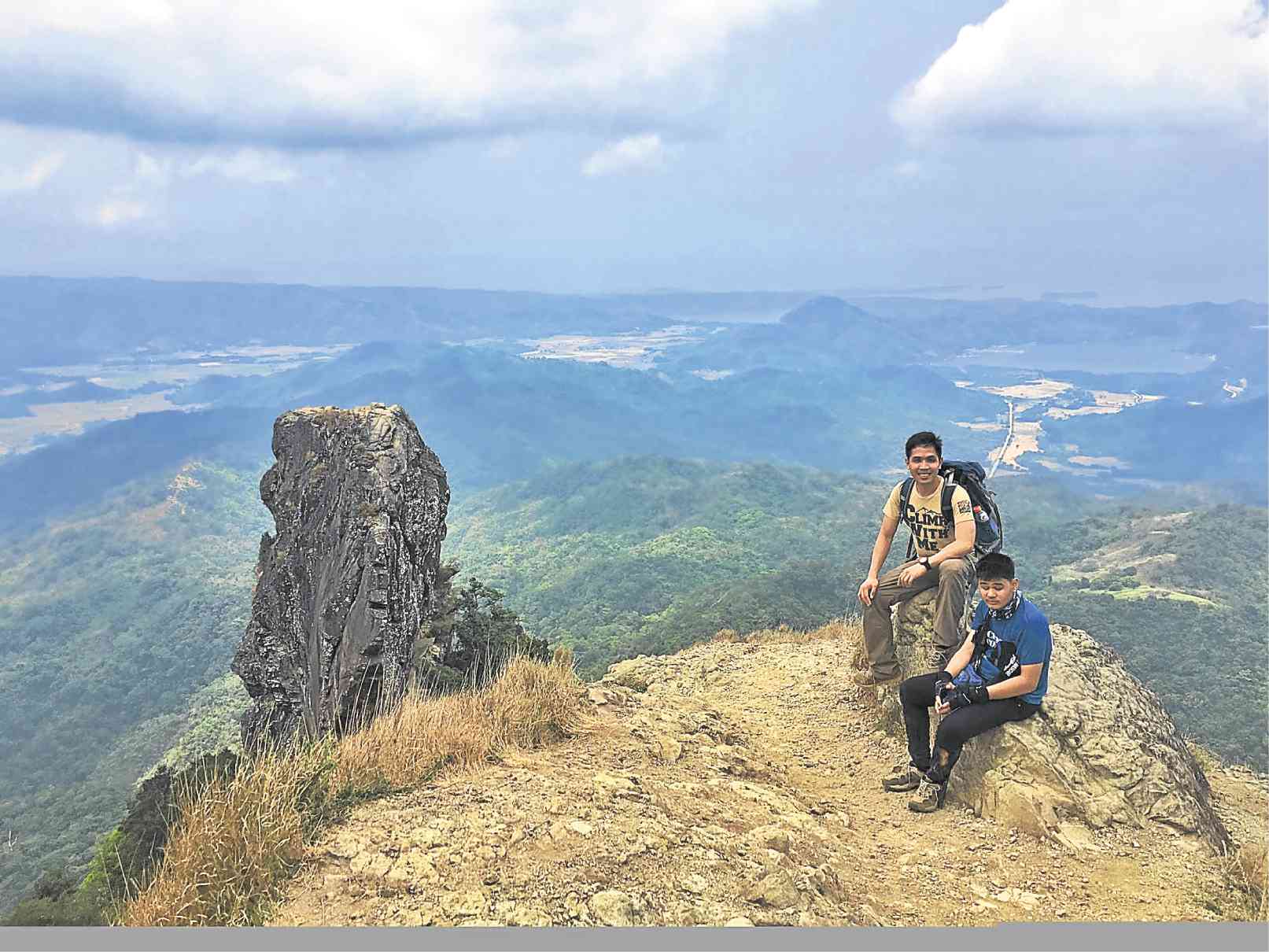
NOTHING IS IMPOSSIBLE Jerald Polintan (right) poses with his guide and “Zero Visibility” organizer Gideon Lasco as they reach the summit of Mount Pico de Loro in Cavite. Lasco organized the first “blind hike” for a group of visually impaired persons. GIDEON LASCO/CONTRIBUTOR
SAN PEDRO CITY—Jerald Polintan, 14, breathed the cool mountain breeze 664 meters above sea level as he tried to paint in his mind the blue skies, the lush greenery and the puffy clouds that surrounded him as he sat atop Mount Pico de Loro.
His father, Jong, 47, was beside him diligently describing the vast forests, sky and mountain ranges that lay before them.
Jong, who runs a canteen in Cagayan Valley, said he’s thankful that Jerald was born with a vivid imagination that made it easier for Jerald, who was born prematurely and blind, to see the world.
Scaling Pico de Loro was a feat for father and son who traveled from Santiago City in Cagayan Valley to join the hiking event for the blind on April 28.
With hiking sticks in one hand and the other hand clinging to guides, nine blind and first-time trekkers completed the three-hour hike to Pico de Loro in the town of Maragondon in Cavite province.
‘Sharing the vision’
The hike, aptly dubbed “Zero Visibility: Sharing the Vision,” was put together by Dr. Gideon Lasco, fellow hiker Simon Adriano of Nomad Terra Crawlers and the groups Parent Advocates of Visually Impaired Children and Resources for the Blind Inc.
“They have lost their sight, but not their vision,” said Lasco, the man behind the blog “Pinoy Mountaineer.”
Climbing Mount Pico de Loro was Jerald’s idea, Jong said.
“Ever since, we let him explore like normal kids do. We don’t keep him inside the house just because of his disability,” Jong said in a recent phone interview.
Jerald attends a regular school in Cagayan Valley. He also participates in long jump and hundred-meter dash competitions in the Cagayan Valley Regional Athletic Association.
“Contrary to popular belief, outdoor recreation is actually possible for people with visual impairment,” said Lasco, a medical anthropologist.
Blind conquers Everest
He said blind hiking may be unheard of in the Philippines although similar activities are being held in other countries. He cited, for instance, American Erik Weihenmayer, who made history by being the first blind mountaineer to conquer Mount Everest in 2001.
On the trail, the blind hikers used their other senses to appreciate the beauty of Pico de Loro.
“They could tell the birds by their sound, feel the rocks or the texture of the trees,” Lasco said.
He noted that the blind also have a great sense of balance, even on steep parts of the mountain.
Selfies
Like most hikers, they, too, have their pictures and selfies taken on the summit with the towering rock, popularly called the monolith, protruding in the background.
Dr. Allan Larona, an ophthalmologist who also joined the hike, said the activity brought a different kind of healing that uplifts and empowers.
“Mountains are for everyone and they can inspire us to overcome our limitations,” Lasco said.
Lasco also organized an “amputee climb” to Mt. Batulao in Nasugbu, Batangas, in 2009. Hikers wearing prosthetics scaled Batulao, which stood 800 masl.
In October 2015, Lasco led the “Climb with Kids” to Mt. Manabu (760 masl) in Santo Tomas, Batangas, with four children and their parents. On their way up, the children were taught to plant tree seedlings and pick up thrash, which helped instill in them the importance of environmental conservation.
Lasco said his group plans to conduct more hiking activities for the blind, this time with Luzon’s highest peak, Mount Pulag (2,922 masl), as their next destination.
Lasco also said he hopes to build the blind participants’ confidence and open people’s eyes to the vast opportunities that lie ahead of the visually impaired.
“Most hikers would say they climb mountains for the rare views on the top. But to Jerald, it was more than what the eyes could see,” Jong said.